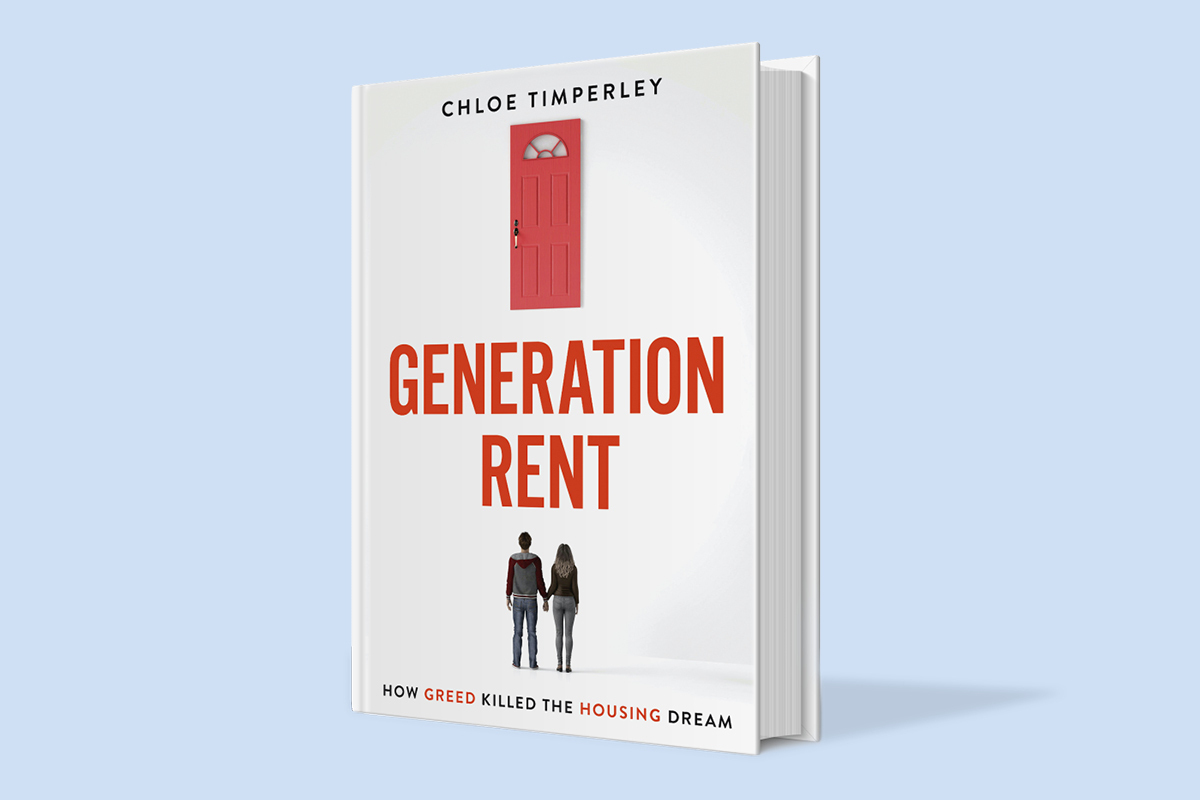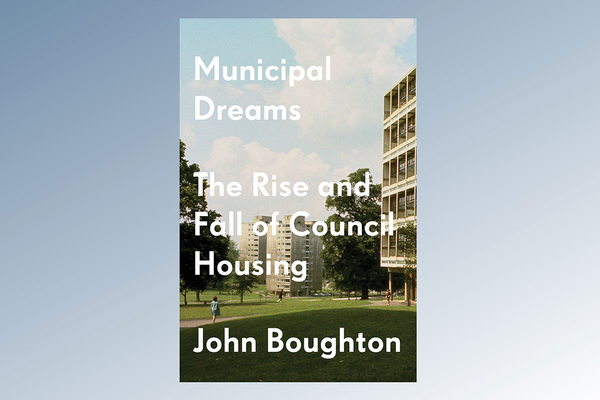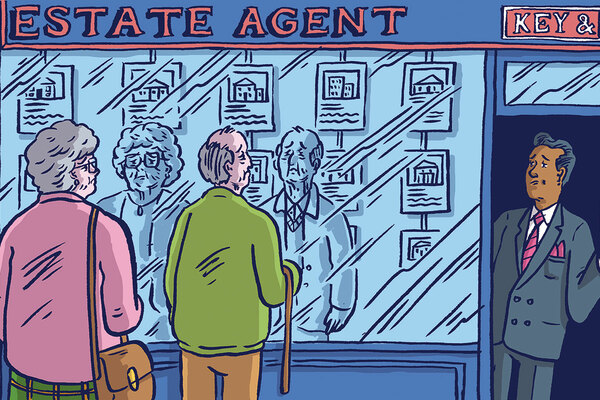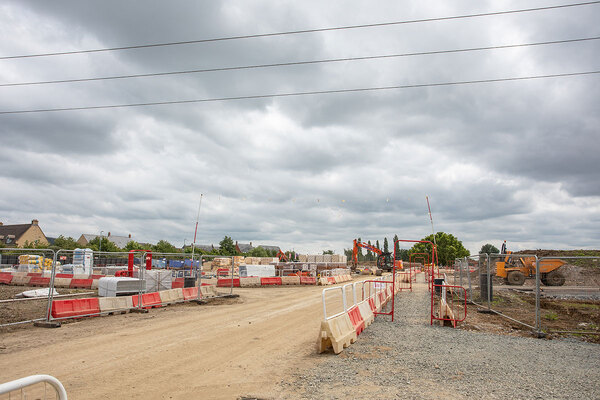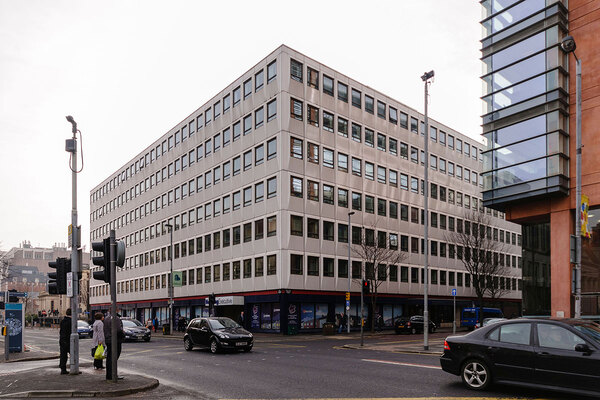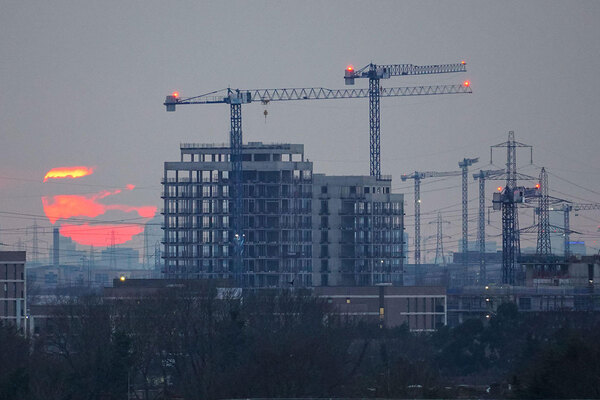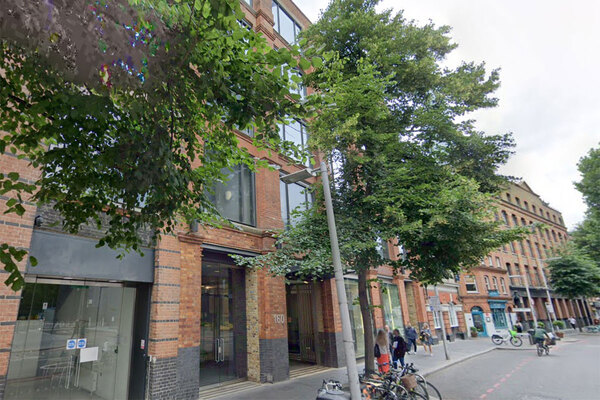The reality of renting: an extract from Generation Rent
A new book on the housing crisis and private renting, Generation Rent: Why You Can’t Buy A Home (Or Even Rent A Good One), was published last month. Below is an extract from Chapter 21: ‘The reality of renting’.
A new book by Chloe Timperley investigates how a generation of young people have been forced into unaffordable and low-quality private rented housing.
The book investigates conditions in private rented accommodation, where rents have surged and now take up close to 40% of average incomes, and where one in four homes is “non-decent”. It tackles the growing scandal of ground rents in new builds and the reasons for the prolonged rise in homelessness.
During her research, Ms Timperley went undercover at landlord events, spoke to MPs and activists, and joined a tenants’ union to witness first-hand the reality of the property market, and listened to the stories of scores of young people stuck against their wishes in the private rented sector.
In summer 2018, Generation Rent, the charity organisation, invited people to share their renting horror stories on Twitter via the hashtag #VentYourRent. The anecdotes flooded in, each documenting a weirdly similar set of complaints.
One tenant called Amy Wilson tweeted a picture of the ‘stunning’ bedroom in her ‘£1,650pm Clapham flat’, which showed a large patch of black mould spattered up the wall like a Jackson Pollock painting. She went on to say how complaining about this apparent health hazard had led to a threat of eviction, which she reported to Lambeth council, who ‘did absolutely nothing’.
Daniel Sparrow, another renter, made what he thought was a reasonable request for something to be done about the lack of heating or hot water in his home in December. The response he got was not only intimidating but completely bizarre: ‘You think you have a hard life? I’ll show you a hard life if you’re not careful.’ Can you imagine Sainsbury’s responding with that line to a customer who complained about their shopping?
“Landlords see your deposit as extra income only to be returned if you know your rights!”
A lot of the complaints aired under the #VentYourRent hashtag were about landlords who expected to receive full market rent for their properties but were reluctant to provide even basic standards of service. Rachel Collinson, a writer, tweeted that, ‘London rent is so high, I’ve never lived alone with my partner since we met 6 years ago. £2,250pcm for a shared flat with regular plumbing and internet access problems. 40 and still renting.’
There were also numerous stories of tenancy deposit theft. Deposits are only supposed to serve as a security for landlords whose tenants fall into arrears or damage the property. Ciara McKibbin, a customer service manager in London, concluded: ‘Landlords see your deposit as extra income only to be returned if you know your rights!’ This was based on her experience of successive landlords trying to deduct ‘£1,000+’ at the end of her tenancies, only to ‘back down’ when she challenged them with ‘evidence/tenancy law’.
The many angry stories seem to arise from a common source: landlords who hold the belief that ‘It’s my property, I can do what I want with it, if you don’t like it you can leave’ – despite the fact that their tenants are paying more in rent than they are for any other service they receive.
As a Twitter user calling himself Erroneous Monk put it: ‘Normally, if you spend £1000s pa on something, you’re a valued customer with the status and power that goes with that.’ If you’re a tenant, however, you’re ‘a serf’.
The comparison between feudalism and modern-day private renting is pertinent when you consider the curtailed rights inherent in the landlord-tenant relationship. Tenants can be made to seek permission before they are allowed to hang pictures, carry out minor repairs or even switch energy supplier. A Uswitch report from 2015 found that landlords were adding £161m per year to renters’ energy bills by denying them the right to change provider. In a Facebook support group for private tenants, one poster called Dom shared how he had returned home one day to find his thermostat covered in a sealed plastic case. The cost of heating was included in the rent, and the landlord had decided that Dom and his housemates couldn’t be trusted to set the heating during the winter.
Periodic ‘inspections’ are the norm for thousands of renters in the UK, because the landlord’s right to peace of mind over the condition of their investment property trumps the tenant’s right to privacy. An anonymous user on the London Assembly discussion forum shared how she is forced to undergo ‘three-monthly property inspections’, highlighting that ‘[the letting] agent’s staff can walk into my home and invade my privacy in a way that even the police can’t’.
Another tenant, who’d been given the pseudonym Angela, wrote in to landlordlawblog.co.uk to ask whether she could do anything about the fact that her landlord’s letting agent had ‘spent over an hour’ taking photographs of ‘each room’ of her home ‘from every angle’, as part of a routine flat inspection. She was told that the photographs would be used in a report for the landlord.
‘I hadn’t been asked and felt powerless to stop them. I just felt like crying,’ she wrote. ‘It seemed to me that the majority of the photos taken were unnecessary.’
By law, tenants do have the right to receive 24 hours’ prior notice if the landlord or letting agent wants to enter the property, and they are even at liberty to refuse entry to their home – unless there’s an emergency in need of urgent attention. But ultimately the landlord holds the power. As Tessa Shepperson, the landlord and tenant lawyer who responded to Angela’s enquiry, points out: ‘If the landlord and agents feel that you are being uncooperative, there is no reason why they should not serve a Section 21 notice on you and require you to vacate.’
“If the landlord and agents feel that you are being uncooperative, there is no reason why they should not serve a Section 21 notice on you and require you to vacate”
Which is not to say that Shepperson didn’t sympathise with Angela. On the contrary, she agreed that the agent’s behaviour was appalling and most likely a breach of the common law covenant, which gives tenants the right to ‘quiet enjoyment’ of their homes. But since the cost of taking a landlord to court is beyond the means of most ordinary renters, Angela’s best option was to write to the agents to ask them not to do it again. Even this option was risky, as the new ‘retaliatory eviction’ laws do not protect tenants who complain about breaches of their fundamental right to ‘quiet enjoyment’. This prompts the question: are rights that are unenforceable in practice really rights at all?
Some would-be private tenants don’t even get as far as having their privacy invaded: their social status or household composition effectively bars them outright from the majority of rental properties on the market. Writing in The Guardian, Rupert Jones wryly commented how the slogan ‘No DSS, no pets, no children’ so frequently seen on rental listings today has become the modern-day version of the racist signs that used to hang in the windows of rooms for rent in the 1950s and 60s: ‘No blacks, no Irish, no dogs.’ The Department of Social Security no longer exists, but is still used as a blanket shorthand to say: ‘No benefit claimants, including the disabled.’
The public sector offers no escape. Since 2012, socially rented homes (the catch-all term for what was once known as ‘council housing’) have been disappearing at an average of about 25,000 a year, according to the Chartered Institute of Housing. With more than a million people now languishing on social housing waiting lists – some waiting for more than a decade – there is a catastrophic log-jam in the UK housing sector.
“It’s no coincidence that many of the locations on HuffPost’s list of places with the most affordable private rental markets also appear on Adzuna’s widely cited list of Worst Cities to Find a Job”
Meanwhile, for all the hand-wringing in the media over how UK house prices have been ‘stalling’ in recent years, the cost of buying a home remains stubbornly high. Rather than restore equilibrium, it seems the private rental market’s ‘invisible hand’ has chosen to give struggling renters the middle finger. In the UK, average rents went up by 16 per cent between 2011 and 2018. At the same time, earnings failed to keep up – rising by just 10 per cent.
Despite this, Savills, the estate agents, predicted that between 2019 and 2023 rents will soar by 13.7 per cent across the UK, with London rents expected to spike by 15.9 per cent. Unless we see a dramatic uptick in wages, it looks like rent rises will continue outstripping pay rises well into the next decade.
HuffPost reckons that, for those struggling with extortionate rents, there’s a simple solution: move to a part of the country where the average rent is still affordable on local wages. However, it’s no coincidence that many of the locations on HuffPost’s list of places with the most affordable private rental markets – for example, Sunderland, Hull, Salford, Stoke-on-Trent, Bradford – also appear on Adzuna’s widely cited list of Worst Cities to Find a Job.
That’s not to brand these areas as unattractive places to live. As someone who grew up and currently lives in Sheffield, I know how frustrating it can be when the public perception of your city as a post-industrial wasteland is 40 years out of date. But the fact remains that rents tend to reflect the strength of the local economy in a given area. It makes no sense to suggest that the housing crisis can be solved by getting the majority of renters to move to the areas with the fewest job opportunities.
Moreover, if hordes of Southerners did descend on Durham (home to the UK’s most affordable rented housing, according to HuffPost) to start businesses and rent homes, this surge in demand would push up prices and price out the locals. The problem would not be solved, just shifted. In her 2017 book Big Capital, Anna Minton traced in sharp detail how this ‘domino effect’ in the housing market is already displacing families and communities in a chain reaction that runs from the very top to the very bottom of the economic food chain. London’s multimillionaires are being displaced by foreign billionaires from the hottest ‘super prime’ postcodes; multimillionaires are in turn pushing millionaires out into the commuter belt; millionaires are pushing the affluent middle classes even further afield towards Oxford, Reading, Cambridge, Brighton and Bristol; and so on.
“As this tide of wealth sweeps from one postcode to the next, it is society’s most vulnerable who pay the steepest price”
As this tide of wealth sweeps from one postcode to the next, it is society’s most vulnerable who pay the steepest price. Through Facebook, I got chatting to a private renter called Ali, who told me how she was effectively priced out of Bristol, which had been her home for almost all her adult life, when her ‘lovely, affordable house’ was sold by her landlady of five years.
‘I was lucky as my rent never went up, and it was in a nice street in a gentrifying area where the rents doubled within about three years,’ she explained. ‘When it was abruptly sold off and I only got two months it was a nightmare.’
A few years ago, Ali fell ill with a chronic pain disorder that forced her to give up work. As a result, she now relies on benefits to survive. Ali’s struggle to find somewhere else to live in Bristol was hampered, not only by the vanishing scarcity of affordable housing in the city, but by the fact that, ‘if you get housing benefit, most landlords just say no, they don’t care about your circumstances… and why should they? They aren’t social housing providers.’
“It’s as if he’s trying to say: ‘It’s MY property, not yours… So you must not be allowed to feel comfortable at any time of the day or night!’”
Ali ended up having to move to Wales, where she is now ‘really isolated’. ‘I’ve got no friends or family here,’ she said, ‘just one nice neighbour, and my cat!’ To make matters worse, she has fallen into the clutches of a rogue landlord.
The landlord owns all five flats in Ali’s building and, according to Ali, his favourite pastime is to turn up unannounced, ‘lurk around’ outside for a bit, then knock on his tenants’ doors to make incessant, pointless intrusions. He’ll say: ‘I just came to tell you I’ll be back next week for…’ or ‘I’m here to see another tenant and thought I’d pop round,’ or even ‘I’m just checking if my key works.’
‘It’s basically territorial pissing,’ Ali said. ‘[It’s as if he’s trying to say] “It’s MY property, not yours… So you must not be allowed to feel comfortable at any time of the day or night!’”
He believes he is perfectly entitled to roam about the garden at 10.40pm, as he regards it as a ‘shared space’, despite the fact that the garden was advertised as ‘private’ on the rental listing.
As affluent Londoners are priced out of the capital, they move to areas like Ali’s old neighbourhood and start families, pushing up rents and house prices for longer-standing residents. It comes as no surprise to learn that the housing crisis is especially acute in Bristol.
“The result is that thousands of individuals and families are being forced to live in hotels and B&Bs for years at a time – or else sleep in a vehicle, or in sleeping bags on the street”
‘I have friends in their 50s still living in house shares,’ Ali told me. Apparently, the sight of people sleeping in vans or cars parked up in the street is common. Bristol is among the least affordable areas by local authority in the country; it is also among the top 50 local authorities for homelessness.
Following a Freedom of Information request, The Bristol Post revealed in May 2018 that, as of the previous month, there were around 11,500 households on the social housing waiting list, while there were just 20 – yes, twenty – social rented properties available. The council’s website reportedly warns prospective applicants: ‘It’s very unlikely that you’ll be offered a council property because the waiting list is very long.’
The result is that thousands of individuals and families are being forced to live in hotels and B&Bs for years at a time – or else sleep in a vehicle, or in sleeping bags on the street. Or, like Ali, they are forced to leave.
Interestingly, when I mentioned to Ali that I live in Sheffield, she said: ‘I know quite a few people who have moved to Sheffield because they can’t afford to live in Bristol any more. It’s one of the places I’ve been considering myself, actually.’
In 2018, the property listings website Zoopla revealed that over the previous year, house prices in Sheffield had soared at a faster rate than any other city in the country. According to totallymoney.com’s ‘Buy-to-Let Yield Map’, there are 25 postcodes in the UK where median rental yields are between seven and 10 per cent, and not one is in London. L1 (Liverpool) comes top, followed by FK3 (Falkirk) and G52 (Glasgow). Postcodes in Leicester, Leeds and Sheffield all make the top 10.
This is significantly more attractive than the 2-6 per cent yields London-based landlords are currently getting. How long will it be before the mass exodus of young people from the South, coupled with the tantalising investment opportunities in the North, turn cities like Sheffield, Leeds, Manchester and Nottingham into the next Bristol?
“London and the South East are not so much the ‘worst hit’ areas as the ‘first hit’ areas”
It’s time we do away with the narrative that the housing crisis is primarily a problem in London and the wider South East. Usually, when London is described as the ‘worst hit’ area in the housing crisis, it paints exploding rents and house prices as a meteor that careened into the UK some time around the millennium, leaving a radioactive crater in the centre of London. The fallout from this impact then rippled outwards, generating difficulty (and vast capital gains) across the country, albeit lessening the farther you went from the impact zone.
Unfortunately, this is an oversimplification. London and the South East are not so much the ‘worst hit’ areas as the ‘first hit’ areas. Unless something drastic is done to tackle the root causes of the housing crisis, then conditions in the London private rented sector will only serve as a chilling preview of the future for all of generation rent. This is why so many renters look to the future with rage and despair in equal measure. The worst thing about being stuck in the private rented sector is not just the current state of play – the mould, the stolen deposits, the eviction notices. It’s the dawning realisation that housing affordability is still worsening and the housing crisis is just getting started.
Generation Rent: Why You Can’t Buy A Home (Or Even Rent A Good One) by Chloe Timperley, Canbury Press, £9.99
The book is available here and Inside Housing readers can get a 10% discount and free postage by entering the code Summer10 at checkout.
At a glance: the different types of rent in London
Picture: Getty
Social rent: The amount of social rent a person pays depends on the location and size of the property, and is set according to a complex formula, but it is typically set at between 50% and 60% of market rent.
Affordable rent: Introduced by the coalition government in 2011, ‘affordable’ rent can be up to 80% of market rent, although many associations have been charging lower than this.
London Affordable Rent: A tenure introduced by Sadiq Khan that is lower than national affordable rent and based on target rent levels towards which social rents are gradually being raised. This makes it higher than average social rents in the capital, but in line with the rent that would likely be charged if a new social rent unit was built and set according to the same formula.
London Living Rent: A rental product aimed at middle-income Londoners introduced by Sadiq Khan, with rents set at one-third of average local earnings.
Target rent: A social rent level calculated by the government, which council and housing associations should use to move their social rents to over time.
Sign up for our daily newsletter
Already have an account? Click here to manage your newsletters
